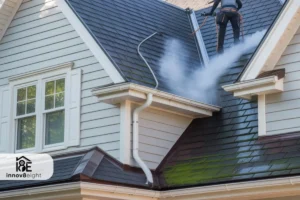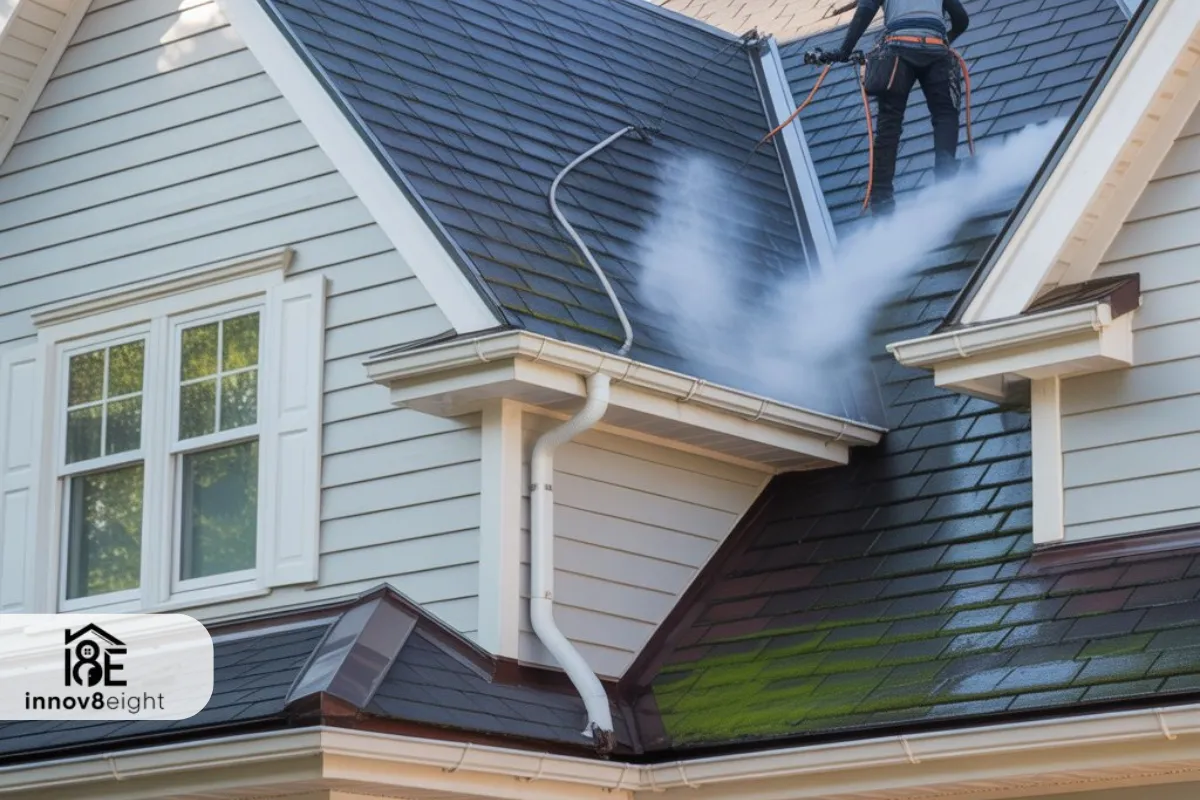Why Cleaning Shark Vacuum Filters Matters
If your Shark vacuum isn’t picking up dust like it used to, it might be the filters. Learning how to clean Shark vacuum filters is the key to keeping your vacuum in top shape. Dirty filters make your vacuum work harder, reduce suction, & can even spread dust back into your home. Regular maintenance keeps everything running smoothly and extends your vacuum’s life.
Benefits of Clean Filters
Clean filters don’t just improve suction—they also make your home healthier. Removing dust, pet hair, & allergens helps you breathe easier, especially if anyone has allergies or asthma. Plus, a vacuum that works efficiently saves time & energy while cleaning, making your chores less frustrating.
Types of Filters You’ll Be Cleaning
Your vacuum may have foam & felt filters, HEPA filters, or pre-motor & post-motor filters. Each type traps dust differently: foam & felt catch larger debris, while HEPA filters trap microscopic particles. Knowing this helps you clean the right way & prevents damage.
Understanding Your Shark Vacuum Filters
Different Types of Shark Vacuum Filters
Before learning how to clean Shark vacuum filters, it’s important to know the types you’re dealing with. Most Shark vacuums have foam & felt filters, HEPA filters, and sometimes pre-motor & post-motor filters. Foam & felt filters catch larger dust particles, while HEPA filters trap tiny allergens like pollen & pet dander. Pre-motor filters protect your vacuum motor, and post-motor filters ensure the air leaving the vacuum is clean. Knowing these types helps you clean effectively without damaging anything.
How to Identify Your Filters
Not sure which filter is which? Check inside your dust cup or near the motor. Foam filters are soft & squishy, felt filters are a bit firmer, and HEPA filters look like small pleated sheets. Taking a quick photo before removal helps you remember how to reinstall them properly. This simple trick prevents mistakes and keeps your vacuum working perfectly.
Why Each Filter Matters
Each filter plays a special role in your vacuum’s performance. Dirty filters reduce suction, make your vacuum noisier, and can even leave dust behind. Cleaning them regularly is essential to maintain how to clean Shark vacuum filters correctly. By understanding each filter’s function, you’ll know which cleaning method works best for foam, felt, or HEPA types.
How Often to Clean Your Filters
Frequency matters! Foam & felt filters usually need cleaning every 1–2 months, while HEPA filters can last 3–6 months, depending on usage. Pre-motor & post-motor filters might need more attention if your home is dusty or if you have pets. Following this schedule keeps your vacuum performing at its best & ensures you’re always ready for a fast, clean home.
Tips for Long-Lasting Filters
- Keep your filters dry before reinstalling
- Avoid using soap on foam or HEPA filters unless specified
- Store extra filters in a clean, dry place
- Check for any cracks or damage during cleaning
Safety Precautions & Step-by-Step Cleaning
Unplug Your Vacuum Before Cleaning
Safety first! Before you start learning how to clean Shark vacuum filters, always unplug your vacuum. This simple step prevents accidents and ensures you can handle filters safely without the risk of electric shock. It also gives you peace of mind while removing, washing, and drying the filters.
Gather the Right Supplies
You don’t need anything fancy—just a few items make cleaning filters easier:
- Cold water
- Soft-bristled brush
- Microfiber cloth
- Optional: small bowl for soaking foam or felt filters
Having everything ready before you start makes the cleaning process faster & stress-free.
Step-by-Step Cleaning for Foam & Felt Filters
- Remove the foam & felt filters from the dust cup.
- Gently tap them to remove loose debris.
- Rinse under cold water until the water runs clear. Avoid soap unless the manufacturer specifically allows it.
- Squeeze gently—don’t wring—to prevent damage.
- Air dry completely for at least 24 hours before reinstalling.
Step-by-Step Cleaning for HEPA Filters
- Remove the HEPA filter carefully.
- Tap lightly to dislodge dust.
- Use a soft brush to clean the surface of the filter.
- Rinse with cold water if washable (check the model manual).
- Let it air dry fully before putting it back. Never reinstall a damp HEPA filter—it can damage your vacuum or promote mold growth.
Cleaning Pre-Motor & Post-Motor Filters
- Pre-motor filters protect your vacuum motor, so avoid using excessive water.
- Post-motor filters ensure the air leaving your vacuum stays clean. Lightly rinse if washable, then air dry.
- Always check your manual for model-specific instructions to avoid mistakes.
Quick Tips for Safe Filter Maintenance
- Take photos before removing filters to remember their placement.
- Avoid using hot water—it can damage filter material.
- Handle foam & felt filters gently to prevent tears.
- Clean regularly to avoid buildup, making future cleaning faster & easier.
Maintenance Tips & Troubleshooting

Regular Cleaning Schedule
Keeping a routine is the easiest way to maintain your vacuum. Foam & felt filters should be cleaned every 1–2 months, while HEPA filters can last 3–6 months depending on use. By sticking to this schedule, you ensure your vacuum performs at its best and prevent clogs or reduced suction. Learning how to clean Shark vacuum filters regularly saves time, effort, & frustration later.
How to Store Your Filters Properly
Filters stay in great shape longer if stored correctly. Always keep spare filters in a clean, dry place. Make sure washed filters are completely dry before reinstalling. Avoid stacking or squishing filters, as it can damage their shape and reduce effectiveness.
Troubleshooting Common Issues
Even with regular cleaning, sometimes things go wrong. Here are solutions to common problems:
- Reduced suction: Check for clogs in hoses & ensure filters are fully dry.
- Unpleasant odors: Wash foam & felt filters thoroughly & let them air out.
- Filter won’t fit: Compare to photos you took before removing to ensure proper placement.
When to Replace Filters
Even the best maintenance can’t make a filter last forever. Replace filters if they’re torn, heavily stained, or don’t fit properly after cleaning. HEPA filters usually need replacement every 12 months or sooner if your vacuum struggles to pick up dirt. Replacing at the right time keeps your vacuum working efficiently & extends its life.
Extra Tips Most Guides Miss
- Avoid using hot water or harsh chemicals—stick to cold water & gentle brushing.
- Tap filters gently instead of shaking too hard to prevent tearing.
- Use a small, soft brush to remove stuck debris from foam & felt filters.
- Check your vacuum’s dust cup & brush roll while filters dry to keep the whole machine in top condition.
Final Thought
Taking the time to learn how to clean Shark vacuum filters is one of the easiest ways to keep your vacuum performing at its best. Clean filters mean stronger suction, a longer-lasting machine, and a healthier, dust-free home. With the simple steps in this guide, maintenance becomes quick, stress-free, & even satisfying. Stick to a regular cleaning routine, handle your filters gently, and your Shark vacuum will reward you with reliable, efficient cleaning every time.
FAQs
Q1: How long does it take for filters to dry?
Foam, felt, and HEPA filters should air dry completely—usually 24 hours—before reinstalling. Never use them damp, or you risk damage & mold growth.
Q2: Can I use soap on my filters?
It depends on the filter type. Foam & felt filters usually only need cold water, while some HEPA filters can tolerate mild soap if your manual allows. Always check your model instructions first.
Q3: How often should I clean my Shark vacuum filters?
Foam & felt filters: every 1–2 months
HEPA filters: every 3–6 months
Pre-motor & post-motor filters: as needed depending on dust & pet hair
Q4: When should I replace my filters instead of cleaning them?
If filters are torn, deformed, heavily stained, or airflow is still reduced after cleaning, it’s time to replace them. HEPA filters usually last about a year with regular maintenance.













